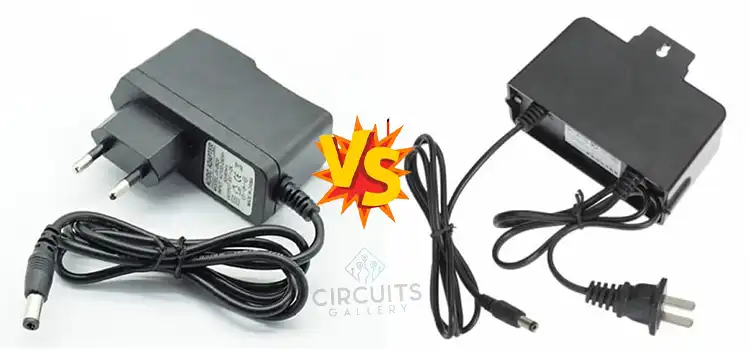12V DC vs 12V AC [Key Differences]
When it comes to electrical systems, understanding the difference between direct current (DC) and alternating current (AC) is crucial.
In this article, we will delve into the comparison between 12V DC and 12V AC power systems, explaining their characteristics, applications, and advantages. By the end, you will have a comprehensive understanding of these two power sources and their respective uses.

Direct Current (DC) and Alternating Current (AC)
DC, or direct current, refers to an electrical current that flows in a single direction, maintaining a constant polarity. In a DC circuit, electrons move from a negative terminal to a positive terminal, creating a consistent flow of energy. DC is commonly used in batteries, solar cells, and electronic devices.
AC, or alternating current, stands in contrast to DC. As its name implies, AC oscillates or alternates its direction periodically, reversing polarity multiple times a second. The frequency of these reversals, typically measured in hertz (Hz), determines the rate at which the current changes direction. AC is the standard form of electricity delivered to homes and businesses, typically operating at a frequency of 50 or 60 Hz.
Key Differences Between 12V DC and 12V AC
Key differences between 12V DC and 12V AC are explained below.
- Nature of Voltage:
12V DC: Provides a constant voltage level of 12 volts without changing polarity.
12V AC: Provides an oscillating voltage that alternates between positive and negative 12 volts.
- Applications:
12V DC: Commonly used in portable devices, automotive electronics, and small-scale applications.
12V AC: Often utilized in specific lighting systems, transformers, and low-power applications
- Power Transmission:
AC power is ideal for long-distance power transmission due to its ability to be easily stepped up or down using transformers. This is why AC power is commonly used in power grids.
In contrast, DC power transmission suffers from higher losses over long distances, making it less efficient for grid-based systems. However, DC power transmission is gaining popularity in certain applications, such as high-voltage direct current (HVDC) transmission lines.
- Conversion and Compatibility:
12V DC: Easily converted from AC through power adapters but may require inverters for certain AC devices.
12V AC: Typically requires conversion to DC for most electronic devices via rectifiers or converters.
- Safety Considerations:
AC power has an advantage over DC power when it comes to safety. The periodic zero-crossing of the AC waveform ensures that there is less risk of electric shock when dealing with exposed wires. This is why homes and buildings use AC power. However, DC power is considered safer in terms of reducing fire hazards since it eliminates the risk of arcing and sparking.
Practical Applications and Considerations
DC power is used in vehicles for various applications, including powering lights, starters, and electronics. Many electronic devices, such as smartphones, laptops, and handheld tools, rely on DC power sources like batteries and adapters. Solar panels and wind turbines generate DC power, which is then converted to AC power using inverters for grid connection or storage.
AC power is the standard form of electricity used in homes and businesses worldwide. AC motors are widely used in industrial applications due to their efficiency and ease of control. AC power is used for long-distance power transmission and distribution.
Choosing Between 12V DC and 12V AC
The choice between 12V DC and 12V AC depends on the specific application and requirements. For devices that require a constant flow of current in a single direction, such as electronic circuits and battery-powered devices, 12V DC is the preferred choice.
Conversely, for applications that utilize motors, transformers, and other electrical components that rely on alternating polarity, 12V AC is the suitable option.
Frequently Asked Questions
Can I use a 12V DC power source for my home appliances?
No, most home appliances require AC power, not DC power. You will need to convert DC power to AC power using an inverter.
Is it possible to convert 12V AC to 12V DC?
Yes, you can convert 12V AC to 12V DC using a rectifier or a power supply with a built-in rectification circuit.
Why is AC power considered safer than DC power for homes?
AC power periodically crosses zero voltage, reducing the risk of electric shock when dealing with exposed wires. Additionally, AC power eliminates the risk of arcing and sparking, reducing fire hazards.
To Conclude
Understanding the fundamental distinctions between 12V DC and 12V AC is crucial in selecting the appropriate electrical voltage for various applications. Whether powering electronic gadgets, illuminating homes, or operating industrial machinery, recognizing the unique characteristics of DC and AC ensures efficient and safe electrical operations.
Subscribe to our newsletter
& plug into
the world of circuits